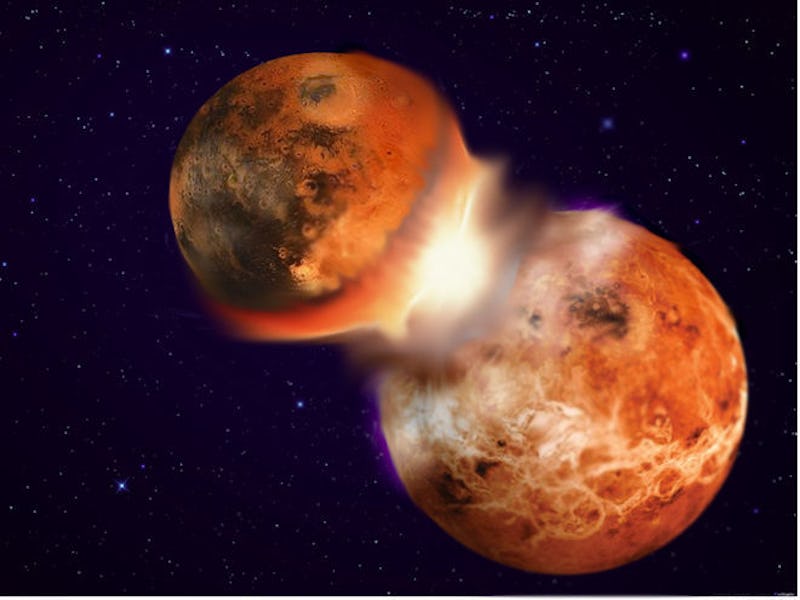Why is the Earth Tilted? New Theory Offers Clues on a Dizzy Moment

The story of the Earth and its moon has traditionally started with the “big whack,” a collision between proto-Earth and a Mars-sized planet about 4.5 billion years ago that nearly vaporized them both and knocked enough debris into orbit to form the moon. Now, new evidence suggests that this impact also sent Earth into a very tight spin with a very sharp axial tilt, nearly perpendicular to the equator. And it just might be that this dizzy moment in our planet’s history was fundamental to the creation of the conditions that support life.
The groundbreaking study out of the University of Maryland, published online Monday in Nature, provides the most complete explanation for the fact that the moon’s orbit is about five degrees off kilter from Earth’s orbital path around the sun.
“This large tilt is very unusual. Until now, there hasn’t been a good explanation,” says Astronomy Professor Douglas Hamilton, one of the paper’s authors, in a release. But we can understand it if the Earth had a more dramatic early history than we previously suspected.”
In the old model, Earth’s current axial tilt of 23.5 degrees resulted from the angle of the collision that formed the moon, and has stayed that way through time. Over billions of years, Earth’s rotation slowed from five hours to 24 as tidal energy was released.
Before now, scientists assumed there was a gradual transition for the moon's move from Earth's equatorial to ecliptic plane.
The new model is a lot more complicated, but it explains things that couldn’t be explained by the previous one, especially the moon’s orbital tilt. In this story, after the big whack, Earth spun around every two hours and was tilted a dramatic 70 degrees. This helps support evidence that the collision that formed the moon would have had to have been extremely violent — violent enough to turn most of Earth into a cloud of vaporized rock, which explains the similar composition of the Earth and the moon.
Collisional physics suggests the moon would have condensed from the vaporized material along Earth’s equatorial plane, and then transitioned to its ecliptic plane over time because of the sun’s gravitational pull. But in this scenario, with a highly tilted and fast-spinning Earth, that doesn’t happen right away. Instead, tidal flexing that resulted from the moon’s varying distance from the Earth kept the two locked in a sort of stalemate, which could have lasted millions of years.
Through this period the Earth’s rotation would have gradually slowed, until the stalemate was broken and the moon proceeded to travel out towards the sun. This would have caused a righting of the Earth’s axis, and the moon would have oscillated back and forth across the Earth’s ecliptic plane, with these oscillations growing smaller over time as the moon moves further from Earth and energy is dissipated through tides. The moon’s current five-degree tilt of the ecliptic plane is an expression of that continued oscillation.
This story shows how the formation of the moon is tied up with the Earth’s current axial tilt, which is responsible for climate-moderating seasons on this planet. It could be that planets elsewhere with large moons may have gone through this same process, which could make for conditions suitable for the emergence of alien life.
“Despite smart people working on this problem for 50 years, we’re still discovering surprisingly basic things about the earliest history of our world,” says Matija Cuk, a scientist at the SETI Institute and lead researcher for the simulations, in a news release. “It’s quite humbling.